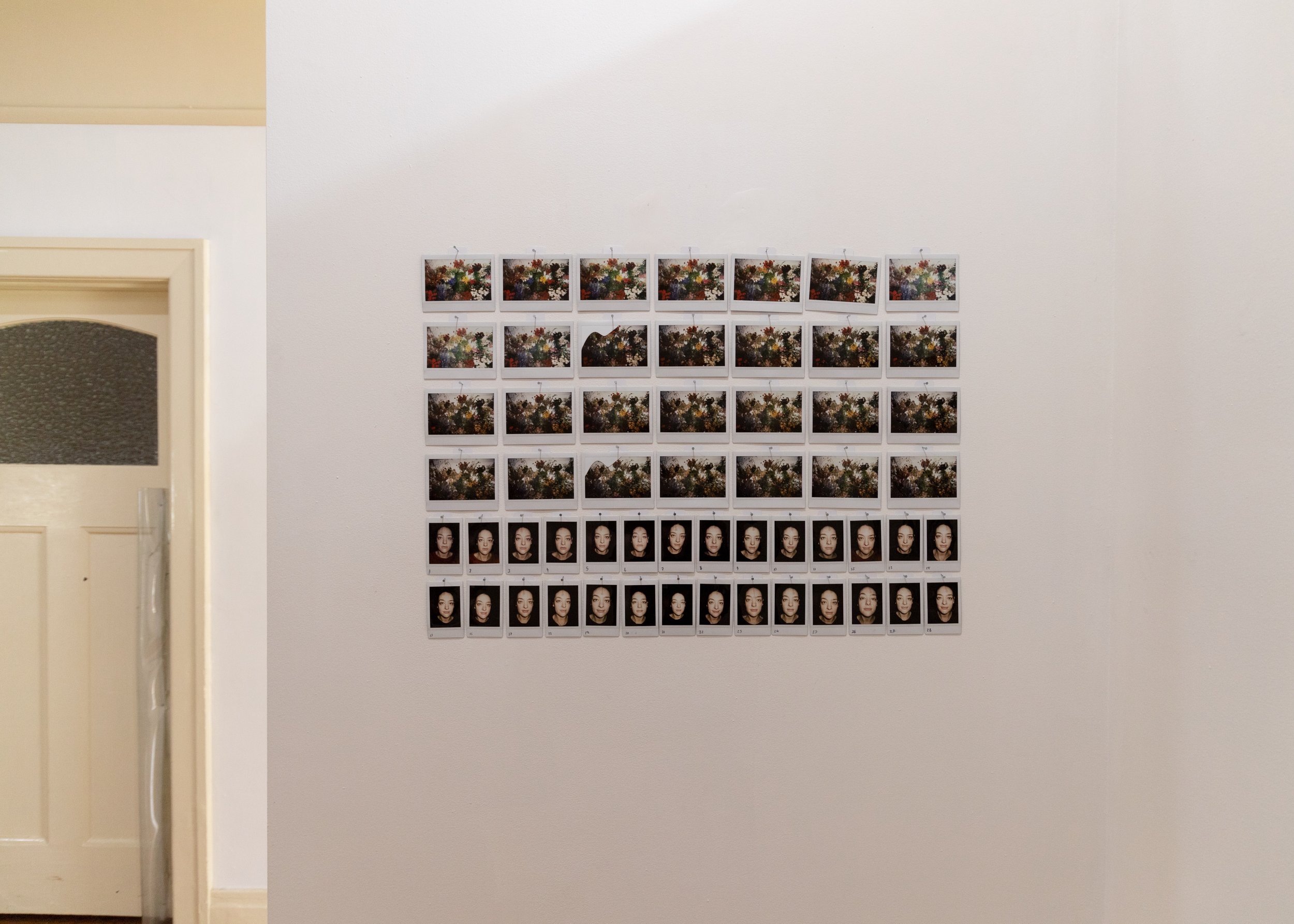Concerned with investigating how live performances are re-experienced by distant audiences, this exhibition considered multiple strategies of re-encountering performance, using the example of my 2021 durational performance ‘Regret’.
Guided by a manifesto on performance ‘liveness’ the exhibition is an artist-led experiment, testing how body-to-body transmission may reoccur and gathering exhibition and practice led research to aid further enquiry for contribution to the contemporary dialogue on collecting, archiving and re-staging performance.
Exhibiton: Seventh Gallery, Naarm
January 8th - February 4th 2023
LIVENESS: A Manifesto for 21st century Performance Artists
Liveness is defined here as the active pre-planning, consideration and creation of an environment by the performance artist, which exists around a live performance in order to maintain its liveness.
Liveness is sensory, emotional, tangible and intangible.
Liveness is found not in one remaining relic of the live performance, but maintained in an environment. In sound recording(s), video and photographs. In living memory (of the audience, institution, participant or spectator) and written testimony: both spontaneous and commissioned. Liveness is captured in physical objects used for or made during the live performance. Liveness is in the instructions, the conversations and interviews. Liveness is in the location, the clothes, the scents, the social media posts, likes and comments. Liveness is in the drawings and designs, patterns and digital files. Specs and rules. Liveness is in lists, instructions, recipes. These, and more, are the relics that hold space for liveness.
The creation of an environment of liveness is specifically motivated.
Liveness exists in durational time. In the past ephemeral, in multiple presents and in the future. Relics perform us, perform themselves, perform time, perform the actions performed on them, perform as mirror to you. Liveness’s character may change over time. This is expected, accepted.
Liveness considers the educational value for future artists and academics looking to study, analyse and learn from previous performance works.
Liveness is a conceptual studio strategy that operates alongside (and after) the development and production of the live performance.
Liveness seeks to influence and contribute to unorthodox archiving practices
Liveness is inherently co-maintained by the institutions/locations who showed the work and the people who saw and/or responded to it, therefore the breadth of liveness is not the solely created by the artist. The artist facilitates its creation and curation through commissioning writers, leaving books for comments, collecting relics, etc.
Liveness is an aid for re-enactment of the ‘original’ performance.
Liveness is access.
Liveness is a performative environment
Liveness creates a series of works for the performance artist desiring sustainable, economic viability as they work in late-capitalism with the perspective of ‘profit-to-continue-our-work-without-other-means-of-capital’.
Liveness acknowledges that 21st century performance artists make work as ancestors of 20th Century performance artists and that this liveness manifesto was written as a result of that legacy and 21st Century political/social, digital, economic and art historical contexts.
IDA SOPHIA, 2022 (Berlin-Tarntanya)
Footnotes:
1 A term used by Professor Anne Marsh, Amelia Jones and others in their critical writing about collecting performances and the archive.
2 Video is not just about recording the performance as it was performed, but additional video created about the performance. For example, “MoMA attempts to capture video documentation of artists describing in detail how they want the works to be (re)performed in the future.” Philip Bither, in Collecting 2016 intermsofperformance.com
3 Durational Time, or La Duree is described as “several conscious states are organised into a whole, permeate one another, [and] gradually gain a richer content” in Time and Free Will, p. 122 by Henri Bergson 1889. To paraphrase, one experiences the past, present and future all at once subjectively, rather than a single unit measurement of time objectively.
4 Already in practice by some collections such as the Walker Art Centre (see: Living Collections Catalogue) and the TATE (Project: Collecting the Performative). Unorthodox practices of ‘collecting’ include radical forms of archival material both tangible and intangible. They are formed with an ‘architecture of access’ that elevates the body-to-body transmission of liveness’ affect on a distant audience. See Rebecca Schneider, Performance Remains Again, 2012.
5 Performance relics are not simply records of past actions but are themselves performative, see Philip Auslander’s ‘Surrogate Performances: Performance Documentation and the New York Avant-garde, ca. 1964–1974’ 2014.
6 The concept of ‘profit-to-continue-our-work-without-other-means-of-capital’ is a term authored by Be Oakley in their ‘Manifesto for Survival’ Gender Fail Publications.
7 It is important to note that 20th C performance artists were working in a realm of institutional critique, to which, in the 21st century institutions have responded to, paving the way for radical forms of performance to exist in both public and institutional realms of practice. See footnote 4.
Exhibited Performance Relics of Regret (2021) Included:
Sound recording of my heart beat (recorded during the performance June 2021)
Recording of me reading from my journal (written during the performance June 2021) Recorded December 2022.
Timelapse video of the entire performance
Flowers displayed at different stages of decompositon
The performance chair
The cloak worn, including all contributed regrets by participatants
Plaster writing tablets, with revised participatory action
Photographs of the performance by Thomas McCammon
Polaroids of the flowers, taken daily throughout the performance
Polaroids of my face, taken daily throughout the performance
Text by Farrin Foster (commissioned, June 2021) reflecting on her experience with the work.
A performance lecture was also conducted on January 8th 2023. The recording of this will be published soon, please check back to view.
Photographs of Seventh Exhibition Installation by Teagan Ramsay
Photographs of Regret (2021) by Thomas McCammon
LIVENESS: A Manifesto for 21st Century Performance Artists
2022- 2023




